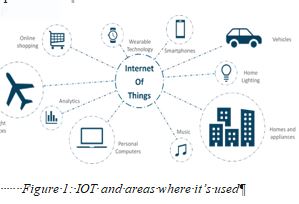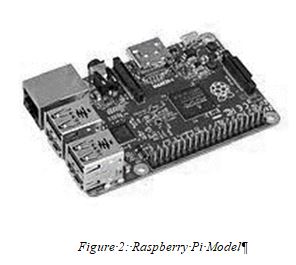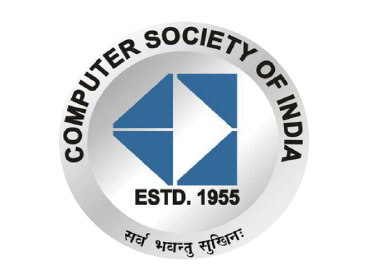Internet of Things: An Implementation Aspect
Faculty Mentor:
Ms.Archana B Saxena
Student Name:
Manupriya Gupta (MCA – I)
Shivani Singh Tomar (MCA – I)
Mansi (MCA – III)
1.Introduction
IOT is a network in which all physical objects are connected to the internet through network devices or routers and they exchange data.
IOT is an intelligent technique which reduces human effort as well as easily accesses physical devices.
These devices gather useful data with the help of various existing techniques and share that data between other devices.
2.Inception Of IOT
The term “Internet of Things” was coined by an entrepreneur Kevin Ashton, one of the founders at Auto-ID center at MIT.
Ashton was first to use the term Internet Of things but the concept of connected devices has been around for long time. For example, machines have been communicating with each other since the first electric telegraph was developed in late 1830s by Samuel Morse.
Other technologies that fed on IoT were radio voice transmission and wireless (WIFI) technologies and now a days these have extended to Bluetooth Mesh Networking, Lifi, Near Field communication and many more.
2.1.IMPACT OF IOT ON OUR WORKING PRACTICES
Here are some examples elucidating how the Internet of Things (IOT) has changed our lifestyles:
- Some homeowners are beginning to make their houses smart by installing fixtures and appliances that are connected to the Internet via WIFI.
- Patients can keep a record of their health using remote administration of medication.
- The Internet of Things also gathers all the data it can from you and lets each fixture and appliance in your smart house adjust themselves according to your established routine and personal preferences.

2.2.IOT Implementations
Being connected to Internet of Things- to send, receive or often act in data – result in many smart IoT things that we can use to build more secure, convenient, intelligent world.
Already IOT plays a significant role in business digital transformation effort. When we combine IOT with AI- leading to “Artificial Intelligence of Things”- the possibilities seem endless.
- There are different areas where IOT is growing its roots:
- Wearables: These devices are installed with different sensors which collect data and information about the users. Ex- Smart watches, smart jewellery.
- SmartCars: The automobile industry has focused on optimizing vehicle internal function. There is a software which give you all information about the cars.
- Industries: In industries IOT is termed as Industrial Internet of things. In these sector brilliant machines are working which are the gift of IOT.
3.RASPBERRY PI
Raspberry Pi is used to implement IOT. It supports Python, C, C++, Java and many more programming languages. It is a ‘Single Board Computer’ which is widely used all over the world.
3.1.Origin
Eben Upton, a British engineer is the creator of the Raspberry Pi and the Raspberry pi Foundation.
He realized that young individuals or students turned away from computer professions, so he had a goal of creating a rather smaller and cheaper device, he came with a solution- Raspberry Pi. It is a series of small single-board computers which was created to promote teaching of basic computer science in schools and the developing countries.
Originated in 2012, it made a sale of more than 5 million by February 2015, making it the best-selling British computer.

3.2.RASPBERRY PI VERSIONS
There are many versions of Raspberry Pi available in the market since it’s launch. Let us have a look at some of them here in brief:
| version
| release date
|
| Model A[$20-$25]
| RPi 1 Model A
| februray 2013
|
| RPi 1Model A+
| november 2014
|
| RPi 3 Model A+
| november 2018
|
| Model B[$25 -$55]
| RPi-1 Model-B
| April-june 2012
|
| RPi-1 Model-B+
| July 2014
|
| RPi-2 Model-B
| february 2015
|
| RPi-3 Model-B
| february 2016
|
| RPi-3 Model-B+
| March 2018
|
| RPi-4 Model-B
| March 2019
|
| Compute Module[$25-$40]
| Compute Module 1
| April 2014
|
| Compute Module 3 & Lite
| January 2017
|
| Compute Module 3+ & Lite
| January 2019
|
| Zero[$5-$10]
| RPi Zero PCB v1.2
| november 2015
|
| RPi Zero PCB v1.3
| May 2016
|
| RPi Zero W
| February 2017
|
3.3.Operating System
The Raspberry Pi Foundation Provides Raspbian, a Debian-based Linux distribution as well as third party RISC OS, Ubuntu, Windows 10 IOT Core and other specialized media center distributions.
OS (Linux-based):
- Lubuntu, Xubuntu, Gentoo Linux
- Arch Linux ARM, Devuan
- SUSE Linux Enterprise
- CentOS, RedSleeve
- Ark OS, Kali Linux
- OS (not Linux-based0
- NetBSD, Haiku
- HelenOS, OpenBSD
- Plan 9 from Bell Labs
- Windows 10 IoT Core
4.FUTURE IS IOT
IOT: AN ULTIMATE SOLUTION TO ALL REQUIREMENTS:
We are living in this technologically advanced world, and everything here is moving toward automation. From smart doorbell to smart package tracking system, everything is becoming smart and taking all of us towards a new era, all because of IoT.
Following are the areas where IoT has become reality and is doing brilliant job: -
- Smart Home: This include using the IoT devices to implement the concept of home automation, for tasks like lighting, air conditioning, etc.
- Elder Care: Our loved ones can be kept in check by using such devices which assist people with disabilities and elderly individuals. They have voice control which can help the people & also include specials sensors which sends alert if any medical emergency is there.
- Smart HealthCare: IoT is used to create a system which is fully digitized and which connects medical resources and health. It is also used to enable remote health monitoring and emergency notification system.
- Smart Transportation: This include smart cars in which sensors are used which tell the user or thecompany about the flaws or problems if found in cars such as the air in tire is less, then the owner will receive the alert from the system.
- Smart parking, Automatic toll collector, Fleet manager, smart traffic manager etc. are some other areas where IoT is used.
- Wearable devices/fitness trackers (e.g., Jawbone Up, Fitbit, Pebble)
- Industrial asset monitoring (GE, AGT Intl.)
5.CHALLENGES IN IOT
As IoT brings the new and amazing opportunities to ease our lives, it also brings the new security concerns. We are giving the system so much of data each and every minute since it is monitoring, detecting and tracking the things around us. IoT connects a large number of devices together via internet and this makes is vulnerable as hackers can attack the system. Hacker can steal the data, may make it unusable or make the whole system vulnerable to cybercriminals.
Additionally, connected devices often ask users to input their personal information, including names, ages, addresses, phone numbers and even social media accounts -- information that's invaluable to hackers.
Hackers are not the only threat to the IOT and its users; privacy is also a concern for IoT users. For instance, companies that make and distribute consumer IoT devices could use those devices to obtain and sell user’s' personal data.
Not only leaking the personal data, but IoT poses a risk to different type of services and resources which use IOT and may also risk human life. So, it is necessary that we take complete measures to keep all the points in mind while working with IOT to efficiently and securely use it.
Refrences
[1]https://en.wikipedia.org/wiki/Internet_of_things
[2]https://internetofthingsagenda.techtarget.com/
definition/Internet-of-Things-IoT
[3]https://www.upwork.com/hiring/development/internet-of-things-platforms-and-programs-you-need-to-know/
[4]https://www.codemag.com/Article/1607071/
Introduction-to-IoT-Using-the-Raspberry-Pi




